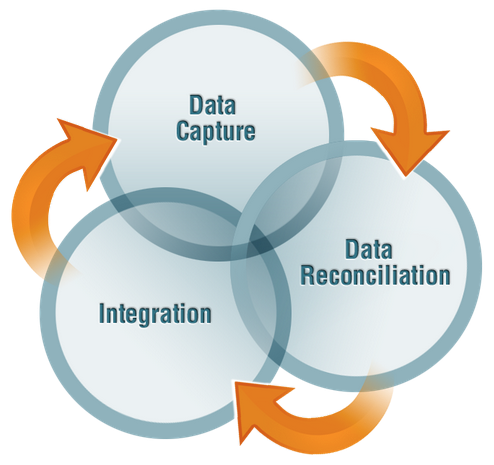Asset Manager's Guide
On this page:
The Asset Manager's Goal: Maintain Accurate Asset Data
The primary objective of an IT asset manager is to optimize the value of IT spend and to minimize compliance risk. To do this, the asset manager must first collect and maintain accurate asset data. There are many financial, operational and compliance business reasons you need to do so, and each client has their own specific needs, but the bottom line is you need a complete, current and accurate database of your asset information so you can do the analysis that helps the organization make good business decisions.
The AssetTrack Process
The challenge is that asset information changes all the time. How do you keep up with the changes in an efficient way that doesn't disrupt the business, but still ensures your ability to maintain data quality? AssetTrack was designed to provide the three components needed.
Data Capture
You need your users to capture changes to asset information as things change. This means providing them mobile data capture tools using barcode and RFID technology to make capturing asset information fast and easy. Your field users have other work to do. In order to get them to participate willingly in asset manager, their job must be easy. AssetTrack provides the tools to make data capture simple.
See Designing Task Forms for information on configuring forms for your AssetTrack users to submit asset updates.
Data Reconciliation
No matter how easy your data capture process is, there will be exceptions that must be reconciled before you load data into your master database. New models, locations and assignee will appear. PO information won't match a shipment. An advance shipping notice won't arrive on time from your vendor. There are all kinds of reasons why asset information found in the wild doesn't fit within your repository cleanly.
That said, you can't have your field users worry about these issues. They have other work to do and, frankly, they're not judged on data quality the way you are. AssetTrack provides the reconciliation tools that let you, the asset manager, manage exceptions collected by your field users so that your field users can get back to work.
See Reconciling data using the queue for information on processing queue data.
Integration
Once the data is captured and reconciled, only then can and should it be applied to your master repository. AssetTrack provides the integration framework to make publishing asset data to your external or internal repository seamless. There is no manual export and import processes that could be another point of error.
See the Integrator's Guide for information on how to integrate AssetTrack with other systems.
